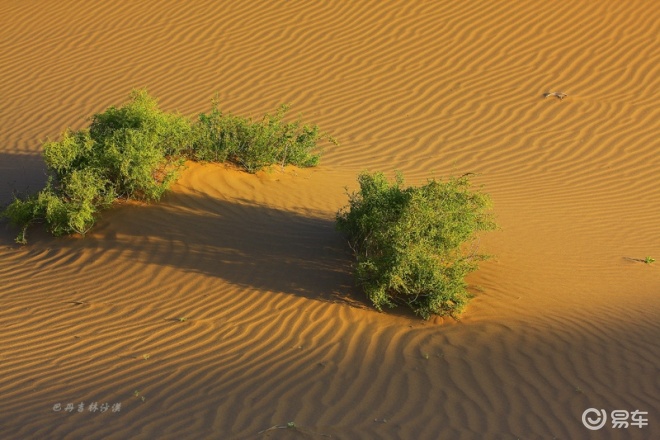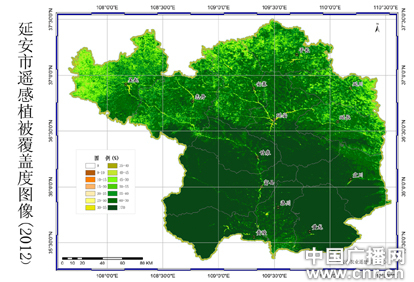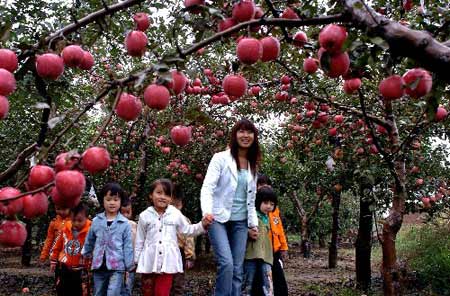How to install the app on iOS
Follow along with the video below to see how to install our site as a web app on your home screen.
Note: This feature may not be available in some browsers.
You are using an out of date browser. It may not display this or other websites correctly.
You should upgrade or use an alternative browser.
You should upgrade or use an alternative browser.
Xinhua Insight: China's desertification reversed through constant efforts
- Thread starter cirr
- Start date
shuttler
ELITE MEMBER

- Joined
- Feb 21, 2012
- Messages
- 9,253
- Reaction score
- 3
- Country
- Location
人进沙退完美逆袭沙逼人退
新华网浙江频道(2013-09-09 15:03:50 星期一) 来源:新华社 编辑:杨心怡(实习)
"People advance desert retreats" a perfect counter-attack against " desert pressing people to back away."
Zhejiang Xinhua Channel (2013-09-09 15:03:50 Monday) Source: Xinhua News Agency Editor: Yang Xinyi (Intern)

在宁夏彭阳县阳洼流域一处生态鸡养殖点,农户在给自己饲养的鸡喂食(2013年3月27日摄)。
In Ningxia Pengyang Yangwa a watershed ecological point of chicken farming, farmers in feeding chickens reared for himself (March 27, 2013 photo).
宁夏是我国土地沙化最为严重的省区之一,周围分布着毛乌素沙漠、腾格里沙漠以及乌兰布和沙漠,是风沙进入我国腹地和京津地区的主要通道和前沿地带。缺林少绿、干旱少雨、生态环境脆弱、自然灾害频繁是宁夏生态的基本状况。自1978年国家实施三北防护林建设以来,作为全境均被列入三北防护林体系的省区,宁夏干部群众在南部山区以保持水土、涵养水土、涵养水源为目标,先后实施了六盘山外围地区针阔混水源涵养林基地、两杏一果生态经济林和全国生态环境重点县等重点林业生态工程;中部沙区以防沙治沙、改善沙区生态条件为目标,通过兴修水利,在沙漠边缘地带建设沙漠绿洲,围栏封育、恢复植被等多种有效形式,开展沙漠化土地综合整治;北部引黄灌区以营造农田防护林、改善生产条件、保障农业高产稳产为目标,实施了第二代高标准农田防护林、贺兰山东麓生态防护林和经济林建设工程。通过连续多年防沙治沙,实施三北防护林、退耕还林、天然林保护以及六个百万亩林业等生态工程,宁夏的生态环境逐渐由黄转绿,实现了从沙逼人退向人进沙退的历史性转变,生态环境与相关经济发展开始步入良性循环。宁夏全区沙化面积由上世纪70年代的2475万亩减少到2010年的1743万亩,累计治理沙化土地700余万亩。截止2012年,森林覆盖率由三北工程实施前的2.4%提高达到12.8%。同时,全区以葡萄、枸杞、红枣、苹果为主的特色经济林基地达460万亩,林业及其相关产业总产值达到160亿元。
新华社记者李然摄
Ningxia is one of the most serious land desertification in one of the provinces, is surrounded by the Mu Us Desert, Tengger Desert and Ulan Buh Desert, is the sand into the hinterland and the Beijing-Tianjin region of the main channel and the frontier zone. Lack of forest less green, drought, ecological environment is fragile, and frequent natural disasters in Ningxia ecological basic conditions. Since 1978, the national implementation since the construction of the Three-North Shelterbelt, as are included in the whole territory of the Three-North Shelterbelt System provinces in the southern mountainous area of Ningxia cadres and the masses in order to conserve soil and water, soil and water conservation, water conservation goal, has implemented a peripheral Liupanshan region mixed coniferous forest base water conservation, "two apricot fruit" ecological forest ecological environment and the national key counties and other key forestry projects; central sandy areas to desertification, improve the ecological conditions of the sand as the goal, through irrigation, construction in the desert fringes of the desert oasis, fencing, revegetation and other effective ways to carry out comprehensive improvement of desertified land; northern irrigated areas to create farmland shelterbelts, improve production conditions, protection of agricultural high yield as the goal, the implementation of the second generation of high-standard farmland shelterbelts, Helan Mountain and forest ecological shelter forest construction. Desertification through successive years, the implementation of the Three-North Shelterbelt, forest, natural forest protection, and "six million acres of" forestry ecological engineering, Ningxia ecological environment gradually turn from yellow to green, realized from the "sand pressing back "to the" people back into the sand, "the historic change, ecological environment and related economic development has entered a virtuous circle. Ningxia desertification area from the 1970s to 2475 reduced to 2010 acres of 1743 acres, a total of more than 700 acres of desertified land. As of 2012, the forest coverage before implementation of the project by the three North 2.4% increase reached 12.8%. Meanwhile, the region's grape, medlar, jujube, apple-based characteristics of forest base reached 460 million mu, forestry and related industry output value reached 16 billion yuan.
Xinhua News Agency reporter Li Ranshe

这是宁夏回族自治区六盘山区针阔混水源涵养林基地(8月20日摄)。新华社记者彭昭之摄
This is the Ningxia Liupanshan Water Conservation District mixed coniferous forest base (August 20 photo). Xinhua News Agency reporters Peng Zhao and Zhi She


这是宁夏回族自治区中卫市沙坡头区西风口一带的生态防护林(8月22日摄)。新华社记者彭昭之摄
This is Zhongwei Shapotou westerly along the mouth of the ecological shelterbelt (August 22 photo). Xinhua News Agency reporters Peng Zhao and Zhi She

在宁夏回族自治区中卫市沙坡头景区内,一位工作人员从已经开始固沙长草的草方格治理区走过(8月21日摄)。多年来,当地群众一直运用扎草方格的方式防风固沙,先后对南山台子沙区、西风口沙区等8大沙区进行了治理,完成治理总面积80多万亩。新华社记者彭昭之摄
In Zhongwei Shapotou scenic area, a staff member from the already long grass straw checkerboard sand control area through (August 21 photo). Over the years, the local people have been using tie grass grid to fend off the wind and sand attacks., the sand has on the table. Managing works on afforestation has been done in the Nanshan District, Taizi sandy district and West Fengkou arear - which all together make up of 8 large sandy areas.It records a successful completion of afforestation for a total area of ​​over 80 hectares. Xinhua News Agency reporters Peng Zhao and Zhi She

在宁夏回族自治区中卫市一家沙漠设施农业基地内,工作人员在为沙漠红提修剪枝叶(8月22日摄)。新华社记者彭昭之摄
In the desert in Zhongwei where a base of agricultural facilities is established. A picture showing a staff in process of pruning red grape plants (August 22 photo). Xinhua News Agency reporters Peng Zhao and Zhi She

宁夏六盘山国家森林公园郁郁葱葱(2012年8月12日摄)。新华社记者李然摄
Lushly green Liupan Mountain National Forest (Aug. 12, 2012 photo). Xinhua News Agency reporter Li Ranshe

宁夏灵武市白芨滩防沙林场的职工在毛乌素沙漠边缘扎草方格(7月23日摄)。白芨滩防沙林场提出全体职工平均每人每年扎设一万个草方格、栽植一万株树苗、治理流沙一百亩、实现治沙收入一万元的治沙目标。如今已完成治沙造林50万亩,控制流沙面积60万亩,在毛乌素沙漠营造了一条东西长47公里、南北宽38公里的绿色屏障。新华社记者李然摄
Workers at Lingwu Baijitan sand forest are busy at the edge of the Mu Us Desert tying up grass for laying squares (July 23 photo).
At the Baijitan sand forest each worker made ​​on average ten thousand grass squares each year. Annually, each of them also plants ten thousand trees, fixes quicksand one hundred acres and achieves generation revenue of ¥10,000 target. The project has now completed planting 50 acres of sand, control quicksand area of ​​60 acres in the Mu Us Desert and has created a green barrier of 47 km long running from east to west by a width of 38 km from south to north. Xinhua News Agency reporter Li Ranshe

在宁夏中卫市永康镇彩达村,村民在果林里收获苹果(2012年10月12日摄)。新华社记者王鹏摄
In the town of Zhongwei City Yongkang Caida village, the villagers harvested apples in fruit trees (Oct. 12, 2012 photo). Xinhua News Agency reporter Wang Pengshe
net assisted translation
新华网浙江频道(2013-09-09 15:03:50 星期一) 来源:新华社 编辑:杨心怡(实习)
"People advance desert retreats" a perfect counter-attack against " desert pressing people to back away."
Zhejiang Xinhua Channel (2013-09-09 15:03:50 Monday) Source: Xinhua News Agency Editor: Yang Xinyi (Intern)

在宁夏彭阳县阳洼流域一处生态鸡养殖点,农户在给自己饲养的鸡喂食(2013年3月27日摄)。
In Ningxia Pengyang Yangwa a watershed ecological point of chicken farming, farmers in feeding chickens reared for himself (March 27, 2013 photo).
宁夏是我国土地沙化最为严重的省区之一,周围分布着毛乌素沙漠、腾格里沙漠以及乌兰布和沙漠,是风沙进入我国腹地和京津地区的主要通道和前沿地带。缺林少绿、干旱少雨、生态环境脆弱、自然灾害频繁是宁夏生态的基本状况。自1978年国家实施三北防护林建设以来,作为全境均被列入三北防护林体系的省区,宁夏干部群众在南部山区以保持水土、涵养水土、涵养水源为目标,先后实施了六盘山外围地区针阔混水源涵养林基地、两杏一果生态经济林和全国生态环境重点县等重点林业生态工程;中部沙区以防沙治沙、改善沙区生态条件为目标,通过兴修水利,在沙漠边缘地带建设沙漠绿洲,围栏封育、恢复植被等多种有效形式,开展沙漠化土地综合整治;北部引黄灌区以营造农田防护林、改善生产条件、保障农业高产稳产为目标,实施了第二代高标准农田防护林、贺兰山东麓生态防护林和经济林建设工程。通过连续多年防沙治沙,实施三北防护林、退耕还林、天然林保护以及六个百万亩林业等生态工程,宁夏的生态环境逐渐由黄转绿,实现了从沙逼人退向人进沙退的历史性转变,生态环境与相关经济发展开始步入良性循环。宁夏全区沙化面积由上世纪70年代的2475万亩减少到2010年的1743万亩,累计治理沙化土地700余万亩。截止2012年,森林覆盖率由三北工程实施前的2.4%提高达到12.8%。同时,全区以葡萄、枸杞、红枣、苹果为主的特色经济林基地达460万亩,林业及其相关产业总产值达到160亿元。
新华社记者李然摄
Ningxia is one of the most serious land desertification in one of the provinces, is surrounded by the Mu Us Desert, Tengger Desert and Ulan Buh Desert, is the sand into the hinterland and the Beijing-Tianjin region of the main channel and the frontier zone. Lack of forest less green, drought, ecological environment is fragile, and frequent natural disasters in Ningxia ecological basic conditions. Since 1978, the national implementation since the construction of the Three-North Shelterbelt, as are included in the whole territory of the Three-North Shelterbelt System provinces in the southern mountainous area of Ningxia cadres and the masses in order to conserve soil and water, soil and water conservation, water conservation goal, has implemented a peripheral Liupanshan region mixed coniferous forest base water conservation, "two apricot fruit" ecological forest ecological environment and the national key counties and other key forestry projects; central sandy areas to desertification, improve the ecological conditions of the sand as the goal, through irrigation, construction in the desert fringes of the desert oasis, fencing, revegetation and other effective ways to carry out comprehensive improvement of desertified land; northern irrigated areas to create farmland shelterbelts, improve production conditions, protection of agricultural high yield as the goal, the implementation of the second generation of high-standard farmland shelterbelts, Helan Mountain and forest ecological shelter forest construction. Desertification through successive years, the implementation of the Three-North Shelterbelt, forest, natural forest protection, and "six million acres of" forestry ecological engineering, Ningxia ecological environment gradually turn from yellow to green, realized from the "sand pressing back "to the" people back into the sand, "the historic change, ecological environment and related economic development has entered a virtuous circle. Ningxia desertification area from the 1970s to 2475 reduced to 2010 acres of 1743 acres, a total of more than 700 acres of desertified land. As of 2012, the forest coverage before implementation of the project by the three North 2.4% increase reached 12.8%. Meanwhile, the region's grape, medlar, jujube, apple-based characteristics of forest base reached 460 million mu, forestry and related industry output value reached 16 billion yuan.
Xinhua News Agency reporter Li Ranshe

这是宁夏回族自治区六盘山区针阔混水源涵养林基地(8月20日摄)。新华社记者彭昭之摄
This is the Ningxia Liupanshan Water Conservation District mixed coniferous forest base (August 20 photo). Xinhua News Agency reporters Peng Zhao and Zhi She


这是宁夏回族自治区中卫市沙坡头区西风口一带的生态防护林(8月22日摄)。新华社记者彭昭之摄
This is Zhongwei Shapotou westerly along the mouth of the ecological shelterbelt (August 22 photo). Xinhua News Agency reporters Peng Zhao and Zhi She

在宁夏回族自治区中卫市沙坡头景区内,一位工作人员从已经开始固沙长草的草方格治理区走过(8月21日摄)。多年来,当地群众一直运用扎草方格的方式防风固沙,先后对南山台子沙区、西风口沙区等8大沙区进行了治理,完成治理总面积80多万亩。新华社记者彭昭之摄
In Zhongwei Shapotou scenic area, a staff member from the already long grass straw checkerboard sand control area through (August 21 photo). Over the years, the local people have been using tie grass grid to fend off the wind and sand attacks., the sand has on the table. Managing works on afforestation has been done in the Nanshan District, Taizi sandy district and West Fengkou arear - which all together make up of 8 large sandy areas.It records a successful completion of afforestation for a total area of ​​over 80 hectares. Xinhua News Agency reporters Peng Zhao and Zhi She

在宁夏回族自治区中卫市一家沙漠设施农业基地内,工作人员在为沙漠红提修剪枝叶(8月22日摄)。新华社记者彭昭之摄
In the desert in Zhongwei where a base of agricultural facilities is established. A picture showing a staff in process of pruning red grape plants (August 22 photo). Xinhua News Agency reporters Peng Zhao and Zhi She

宁夏六盘山国家森林公园郁郁葱葱(2012年8月12日摄)。新华社记者李然摄
Lushly green Liupan Mountain National Forest (Aug. 12, 2012 photo). Xinhua News Agency reporter Li Ranshe

宁夏灵武市白芨滩防沙林场的职工在毛乌素沙漠边缘扎草方格(7月23日摄)。白芨滩防沙林场提出全体职工平均每人每年扎设一万个草方格、栽植一万株树苗、治理流沙一百亩、实现治沙收入一万元的治沙目标。如今已完成治沙造林50万亩,控制流沙面积60万亩,在毛乌素沙漠营造了一条东西长47公里、南北宽38公里的绿色屏障。新华社记者李然摄
Workers at Lingwu Baijitan sand forest are busy at the edge of the Mu Us Desert tying up grass for laying squares (July 23 photo).
At the Baijitan sand forest each worker made ​​on average ten thousand grass squares each year. Annually, each of them also plants ten thousand trees, fixes quicksand one hundred acres and achieves generation revenue of ¥10,000 target. The project has now completed planting 50 acres of sand, control quicksand area of ​​60 acres in the Mu Us Desert and has created a green barrier of 47 km long running from east to west by a width of 38 km from south to north. Xinhua News Agency reporter Li Ranshe

在宁夏中卫市永康镇彩达村,村民在果林里收获苹果(2012年10月12日摄)。新华社记者王鹏摄
In the town of Zhongwei City Yongkang Caida village, the villagers harvested apples in fruit trees (Oct. 12, 2012 photo). Xinhua News Agency reporter Wang Pengshe
net assisted translation
neehar
SENIOR MEMBER

- Joined
- Oct 21, 2012
- Messages
- 2,725
- Reaction score
- 1
- Country
- Location
china deserves appreciation for this achievement.but i'm more keen to know the specific schemes taken by the govt and the ngo to make this possible.can anybody provide the source??govts source or reports would be appreciated thank u.
terranMarine
BANNED

- Joined
- May 3, 2012
- Messages
- 7,597
- Reaction score
- -18
- Country
- Location
china deserves appreciation for this achievement.but i'm more keen to know the specific schemes taken by the govt and the ngo to make this possible.can anybody provide the source??govts source or reports would be appreciated thank u.
So you are asking the Chinese whom you labelled as the aggressor during the 1962 conflict for assistance now? I know Indians can't do anything right.
DoTell
FULL MEMBER

- Joined
- Aug 29, 2013
- Messages
- 869
- Reaction score
- 0
- Country
- Location
china deserves appreciation for this achievement.but i'm more keen to know the specific schemes taken by the govt and the ngo to make this possible.can anybody provide the source??govts source or reports would be appreciated thank u.
neehar,
There are many websites that document the anti-desertification technogies in China. But most of them are in Chinese. I found this English website in U.K. that has a lot of good info (sorry I don't yet have the privilege to post links):
sinoukde-desertification_***_com
cirr
ELITE MEMBER

- Joined
- Jun 28, 2012
- Messages
- 17,049
- Reaction score
- 18
- Country
- Location
Yanan,nestled in the Loess Plateau in China's northwest,and where Mao and his colleagues led the war against firstly the Japs and then the nationalists,is another fine example of the country‘s success in combating deforestation。
From
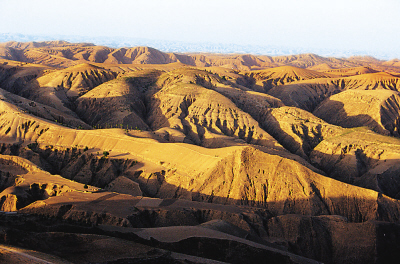

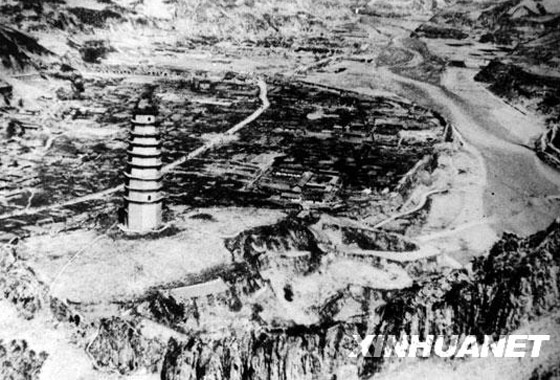
to



Note the pagoda in the 3rd and 6th pics。The Symbol of Yanan!
From



to



Note the pagoda in the 3rd and 6th pics。The Symbol of Yanan!
neehar
SENIOR MEMBER

- Joined
- Oct 21, 2012
- Messages
- 2,725
- Reaction score
- 1
- Country
- Location
So you are asking the Chinese whom you labelled as the aggressor during the 1962 conflict for assistance now? I know Indians can't do anything right.
my dear troll choose some one of ur caliber for ur 2 cents.my question is pretty simple if ur know the answer ur welcome to reply and i'd apprececiate it. i dont give a damn what ur "insights" are on my post.hope u get it..and i'm not always this polite.
Götterdämmerung
SENIOR MEMBER

- Joined
- Nov 22, 2011
- Messages
- 5,369
- Reaction score
- -14
- Country
- Location
This documentary about this topic is really good.
Last edited by a moderator:
shuttler
ELITE MEMBER

- Joined
- Feb 21, 2012
- Messages
- 9,253
- Reaction score
- 3
- Country
- Location
Hereunder are more information for anyone who wants to know about the afforestation programs in China:
中国治沙暨沙业学会
China National Sand Control and Desert Industry Society
联系地址 北京市东城区和平里东街18号
18 Hepingli East Street(dong-jie), Dongcheng District, Beijing
网址 website: forestry.gov.cn
邮政编码 Post code: 100714
联系电话 Phone: 010-84239676
传真电话 Fax: 100714
电子邮件 e-mail: ZSXH@FORESTRY.GOV.CN
中国治理荒漠化基金会
China Foundation for Desertification Control
China Foundation for Desertification Control
中国治沙暨沙业学会
China National Sand Control and Desert Industry Society
联系地址 北京市东城区和平里东街18号
18 Hepingli East Street(dong-jie), Dongcheng District, Beijing
网址 website: forestry.gov.cn
邮政编码 Post code: 100714
联系电话 Phone: 010-84239676
传真电话 Fax: 100714
电子邮件 e-mail: ZSXH@FORESTRY.GOV.CN
中国治理荒漠化基金会
China Foundation for Desertification Control
China Foundation for Desertification Control
shuttler
ELITE MEMBER

- Joined
- Feb 21, 2012
- Messages
- 9,253
- Reaction score
- 3
- Country
- Location
China Battles Desertification
By Manipadma Jena
link

Reclamation of desertified, sandified land on either side of the Sudu desert road in Wengniute County, China, is well under way. Credit: Manipadma Jena/IPS
CHIFENG, Inner Mongolia, China, Jul 5 2012 (IPS) - As scientists increasingly label desertification as one of the most burning challenges facing the world today, a small village in China’s semi-arid Northeastern region of Inner Mongolia is fighting back.
Chifeng City’s dry climate and sparse vegetation have given way to severe surface erosion and poor soil fertility. Agriculture and animal husbandry, the two economic cornerstones of Chifeng City’s nine counties and three districts, are increasingly threatened by the spell of desertification, though afforestation began as early as 1940.
Chifeng City identified deforestation and plowing of hill slopes, continued overuse of sandified farmlands and intensive grazing as the main culprits of the problem, in a region low in plant density and productivity.
Degraded land, shorn of its green cover, became increasingly vulnerable to the March-May spring season’s high velocity winds, which, according to researchers, deposit an average of 35 tonnes of sand on a single square kilometre over a one-month period.
Fighting back
Qihetang, a 228-household village in Chifeng’s Linxi County, is experiencing an ecological disaster due to deforestation and over-grazing. By 1990, its per capita income was 300 yuans, or 50 dollars, and each family harvested a meager 150 kilogrammes of grain from average landholdings of roughly two hectares on the lower hill slopes, which led to rampant out-migration.
In 1992 the local village committee decided to fence hillsides, plant fruit trees and prohibit open grazing. In 2000, the State government chipped in with finance and technical advice for the green conversion. It gave ‘Grain for Green’ subsistence subsidies of 50 yuans (roughly eight dollars) and 200 kilogrammes of grain. Later it allocated 160 yuans, or 25 dollars, for each unit of land owned by farming families, said Cao Wenzhong, director general of the Inner Mongolia Forestry Department.
Of its total area of 2,154 hectares, Qihentang village today boasts a green cover of 80 percent with fruit trees, pines and resuscitated grasslands.
“Per capita income has (shot up) to 8,000 yuans (1,260 dollars) from fruit and timber trading. Farmers are even buying tractors,” Zhang Chun Jie, the head of the village, told IPS.
“Only the severe winter months see migration these days; but many stay home to process farm-grown crepe apples, pears and apricots, grass for fenced animals’ fodder and wood for panels. Tourism is a nascent industry too,” Jie said.
“More than two billion hectares of degraded land worldwide are suitable for rehabilitation through forest and landscape restoration, the majority of it through a combination of agro-forestry and smallholder farming,” Mansour N’Diaye, Chef de Cabinet of the United Nations Convention to Combat Desertification (UNCCD), said at a workshop in Chifeng earlier this year.
Situated directly in the middle of Chifeng, close to the Horqin Sandy Land – which is the primary source of sand drift in the region and one of the four major sand drift sources in China – Wengniute County is the most vulnerable to sandification, and the most important focus of the country’s desertification control programme.
Since October last year, 400,000 hectares of severely sandified land on either side of the Sudu desert-crossing highway in Wengniute County are being painstakingly converted to forests and landscapes. The protective tree barrier – built to stop high-velocity sand and wind – covers 120,000 hectares.
“Reclamation, using (labour) and machinery, costs 7,500 yuans or 1,180 dollars per hectare. The survival rate of indigenous sand-tolerant species like Chinese and Mongolian pine, yellow willow, and eight varieties of shrubs, is 75 percent,” Wang Feiyue of the Farmland Conversion Office told IPS.
While many believe that successful reclamation efforts rest on the government encouraging farmers to reduce livestock numbers or relocate away from arid areas, others believe the temporary displacement of farming communities throws up its own socio-cultural challenges.
In most grassland reclamations the government buys the land from farmers and herdsmen before the project is even launched. For five years all production and grazing is prohibited; from the sixth year seasonal and rotational land-use is allowed.
When a wave of protests in May last year swept across Inner Mongolia, where ethnic Mongolians comprise 20 percent of a population of 23 million people, experts pinned the cause to disruption of deep cultural ties between traditional nomadic ways of life and the grasslands.
China’s 12th Five-Year Plan aims to resettle the remaining nomad population of 1.1 million by 2015.
“We definitely need to better understand the traditional nomadic culture on the steppes here. Nomadic herdsmen are not comfortable with static agriculture. Governments may seek limiting the number of grazing animals (14 million in Chifeng City in 2008) but herdsmen want to own more animals; they lose two-thirds of their stocks to the winter cold,” said Yang Youlin, Asia regional coordinator for the United Nations Convention to Combat Desertification (UNCCD).
China on a knife’s edge
China is currently saddled with a colossal 2.6 million square-kilometre area of desertified and sandified land – almost a quarter of the country’s total territory, covering 18 provinces and impacting 400 million people.
China’s national desertification control programmebudgets five billion dollars annually to this crucial work and 19 ministries work together under the National Bureau to Combat Desertification.
Xu Qing, deputy director general of the programme, says China aims to reclaim half the 530,000 square-kilometre treatable area by 2020, and hopes to reclaim the area in its entirety by 2050.
Quoting results from the third round of national desert monitoring, Jia Xiaoxia, director of China’s Implementation of the Convention to Combat Desertification (CICCD), says the degree of sandy desertification has gone from 3,436 square kilometers in 1999 to 1,283 square kilometers annually.
China has emerged as a leader in fighting sandy desertification by resorting to a combination of scientific eco-construction and land conversion combined with suitable laws and policies that offer lessons for similarly affected regions.
A global crisis
The conference on sustainable development in Rio, Brazil, may have ended last month, but burning environmental issues like desertification continue to make headlines.
“From Rio 1992 to Rio 2012 we have learned that desertification, land degradation and drought are drying up the ‘Future We Want’,” Luc Gnacadja, executive secretary of the UNCCD, warned at the closure of Rio+20.
“In 1992, the Rio meeting agreed to combat land degradation. Rio 2012 has given birth to a new paradigm, land-degradation neutrality,” he said.
The nearly 100 world leaders who gathered in Rio agreed to curb the growing gap between land degradation and its restoration, monitor it globally and improve and share related scientific information including forecasting and early warning systems.
“Desertification, the most urgent land crisis (of our time) affects over 40 percent of the world’s total land area. Asia has the largest desertified area of 1.7 billion hectares; the African continent is two-thirds dryland of which 71 percent is impacted by desertification, land degradation and drought (DLDD). Worldwide 110 countries have drylands that are potentially at DLDD risk,” Youlin informed attendees at the Chifeng workshop.
“By 2030, the demand for food is likely to increase by 50 percent, and by 45 percent for energy and 30 percent for water. Each of these demands will claim more land. This would lead to more deforestation unless we commit to restore degraded land,” Gnacadja stressed.
(END)
By Manipadma Jena
link

Reclamation of desertified, sandified land on either side of the Sudu desert road in Wengniute County, China, is well under way. Credit: Manipadma Jena/IPS
CHIFENG, Inner Mongolia, China, Jul 5 2012 (IPS) - As scientists increasingly label desertification as one of the most burning challenges facing the world today, a small village in China’s semi-arid Northeastern region of Inner Mongolia is fighting back.
Chifeng City’s dry climate and sparse vegetation have given way to severe surface erosion and poor soil fertility. Agriculture and animal husbandry, the two economic cornerstones of Chifeng City’s nine counties and three districts, are increasingly threatened by the spell of desertification, though afforestation began as early as 1940.
Chifeng City identified deforestation and plowing of hill slopes, continued overuse of sandified farmlands and intensive grazing as the main culprits of the problem, in a region low in plant density and productivity.
Degraded land, shorn of its green cover, became increasingly vulnerable to the March-May spring season’s high velocity winds, which, according to researchers, deposit an average of 35 tonnes of sand on a single square kilometre over a one-month period.
Fighting back
Qihetang, a 228-household village in Chifeng’s Linxi County, is experiencing an ecological disaster due to deforestation and over-grazing. By 1990, its per capita income was 300 yuans, or 50 dollars, and each family harvested a meager 150 kilogrammes of grain from average landholdings of roughly two hectares on the lower hill slopes, which led to rampant out-migration.
In 1992 the local village committee decided to fence hillsides, plant fruit trees and prohibit open grazing. In 2000, the State government chipped in with finance and technical advice for the green conversion. It gave ‘Grain for Green’ subsistence subsidies of 50 yuans (roughly eight dollars) and 200 kilogrammes of grain. Later it allocated 160 yuans, or 25 dollars, for each unit of land owned by farming families, said Cao Wenzhong, director general of the Inner Mongolia Forestry Department.
Of its total area of 2,154 hectares, Qihentang village today boasts a green cover of 80 percent with fruit trees, pines and resuscitated grasslands.
“Per capita income has (shot up) to 8,000 yuans (1,260 dollars) from fruit and timber trading. Farmers are even buying tractors,” Zhang Chun Jie, the head of the village, told IPS.
“Only the severe winter months see migration these days; but many stay home to process farm-grown crepe apples, pears and apricots, grass for fenced animals’ fodder and wood for panels. Tourism is a nascent industry too,” Jie said.
“More than two billion hectares of degraded land worldwide are suitable for rehabilitation through forest and landscape restoration, the majority of it through a combination of agro-forestry and smallholder farming,” Mansour N’Diaye, Chef de Cabinet of the United Nations Convention to Combat Desertification (UNCCD), said at a workshop in Chifeng earlier this year.
Situated directly in the middle of Chifeng, close to the Horqin Sandy Land – which is the primary source of sand drift in the region and one of the four major sand drift sources in China – Wengniute County is the most vulnerable to sandification, and the most important focus of the country’s desertification control programme.
Since October last year, 400,000 hectares of severely sandified land on either side of the Sudu desert-crossing highway in Wengniute County are being painstakingly converted to forests and landscapes. The protective tree barrier – built to stop high-velocity sand and wind – covers 120,000 hectares.
“Reclamation, using (labour) and machinery, costs 7,500 yuans or 1,180 dollars per hectare. The survival rate of indigenous sand-tolerant species like Chinese and Mongolian pine, yellow willow, and eight varieties of shrubs, is 75 percent,” Wang Feiyue of the Farmland Conversion Office told IPS.
While many believe that successful reclamation efforts rest on the government encouraging farmers to reduce livestock numbers or relocate away from arid areas, others believe the temporary displacement of farming communities throws up its own socio-cultural challenges.
In most grassland reclamations the government buys the land from farmers and herdsmen before the project is even launched. For five years all production and grazing is prohibited; from the sixth year seasonal and rotational land-use is allowed.
When a wave of protests in May last year swept across Inner Mongolia, where ethnic Mongolians comprise 20 percent of a population of 23 million people, experts pinned the cause to disruption of deep cultural ties between traditional nomadic ways of life and the grasslands.
China’s 12th Five-Year Plan aims to resettle the remaining nomad population of 1.1 million by 2015.
“We definitely need to better understand the traditional nomadic culture on the steppes here. Nomadic herdsmen are not comfortable with static agriculture. Governments may seek limiting the number of grazing animals (14 million in Chifeng City in 2008) but herdsmen want to own more animals; they lose two-thirds of their stocks to the winter cold,” said Yang Youlin, Asia regional coordinator for the United Nations Convention to Combat Desertification (UNCCD).
China on a knife’s edge
China is currently saddled with a colossal 2.6 million square-kilometre area of desertified and sandified land – almost a quarter of the country’s total territory, covering 18 provinces and impacting 400 million people.
China’s national desertification control programmebudgets five billion dollars annually to this crucial work and 19 ministries work together under the National Bureau to Combat Desertification.
Xu Qing, deputy director general of the programme, says China aims to reclaim half the 530,000 square-kilometre treatable area by 2020, and hopes to reclaim the area in its entirety by 2050.
Quoting results from the third round of national desert monitoring, Jia Xiaoxia, director of China’s Implementation of the Convention to Combat Desertification (CICCD), says the degree of sandy desertification has gone from 3,436 square kilometers in 1999 to 1,283 square kilometers annually.
China has emerged as a leader in fighting sandy desertification by resorting to a combination of scientific eco-construction and land conversion combined with suitable laws and policies that offer lessons for similarly affected regions.
A global crisis
The conference on sustainable development in Rio, Brazil, may have ended last month, but burning environmental issues like desertification continue to make headlines.
“From Rio 1992 to Rio 2012 we have learned that desertification, land degradation and drought are drying up the ‘Future We Want’,” Luc Gnacadja, executive secretary of the UNCCD, warned at the closure of Rio+20.
“In 1992, the Rio meeting agreed to combat land degradation. Rio 2012 has given birth to a new paradigm, land-degradation neutrality,” he said.
The nearly 100 world leaders who gathered in Rio agreed to curb the growing gap between land degradation and its restoration, monitor it globally and improve and share related scientific information including forecasting and early warning systems.
“Desertification, the most urgent land crisis (of our time) affects over 40 percent of the world’s total land area. Asia has the largest desertified area of 1.7 billion hectares; the African continent is two-thirds dryland of which 71 percent is impacted by desertification, land degradation and drought (DLDD). Worldwide 110 countries have drylands that are potentially at DLDD risk,” Youlin informed attendees at the Chifeng workshop.
“By 2030, the demand for food is likely to increase by 50 percent, and by 45 percent for energy and 30 percent for water. Each of these demands will claim more land. This would lead to more deforestation unless we commit to restore degraded land,” Gnacadja stressed.
(END)
terranMarine
BANNED

- Joined
- May 3, 2012
- Messages
- 7,597
- Reaction score
- -18
- Country
- Location
my dear troll choose some one of ur caliber for ur 2 cents.my question is pretty simple if ur know the answer ur welcome to reply and i'd apprececiate it. i dont give a damn what ur "insights" are on my post.hope u get it..and i'm not always this polite.
Indeed only polite when you need to beg for help, i know your type of personality.
shuttler
ELITE MEMBER

- Joined
- Feb 21, 2012
- Messages
- 9,253
- Reaction score
- 3
- Country
- Location
宁夏 沙坡头
Sha Potou, Ningxia A.R。



credit: 人民画报rmhb

credit: 人民画报rmhb

Credit:ytszg.com


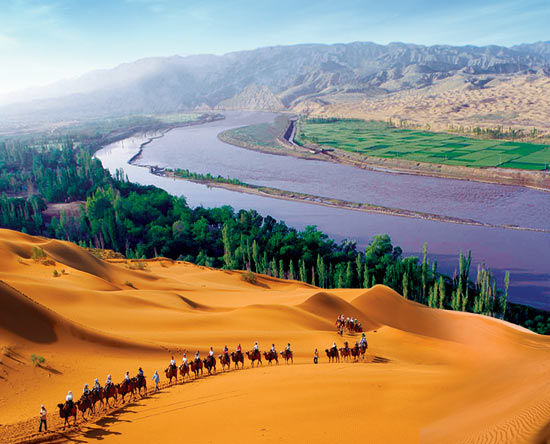
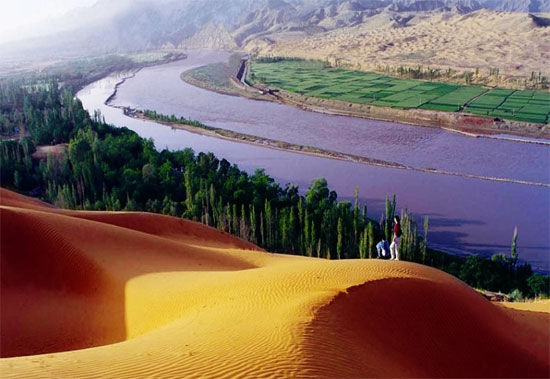

Credit: djg2097.blog.163.com
Above credit: city.sina.com.cn or stated
Sha Potou, Ningxia A.R。


credit: 人民画报rmhb
credit: 人民画报rmhb

Credit:ytszg.com





Credit: djg2097.blog.163.com
Above credit: city.sina.com.cn or stated
Similar threads
- Replies
- 0
- Views
- 558
- Replies
- 0
- Views
- 379
- Replies
- 1
- Views
- 634
- Replies
- 8
- Views
- 1K
Latest posts
-
-
-
-
Methane explosion traps 12 inside coal mine near Quetta
- Latest: Novus ordu seclorum
Pakistan Affairs Latest Posts
-
Methane explosion traps 12 inside coal mine near Quetta
- Latest: Novus ordu seclorum
-
-
-



